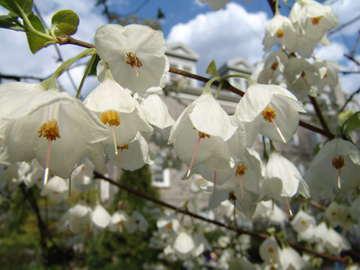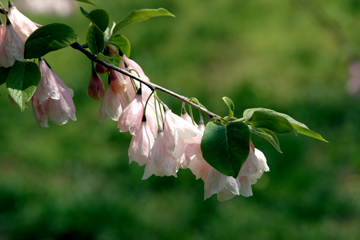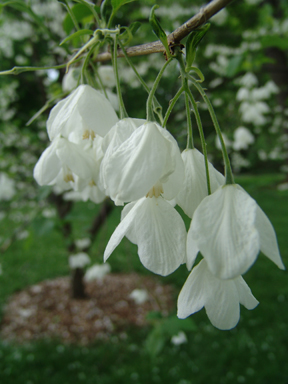Halesia tetraptera
While many gardeners and homeowners grow rhododendrons, many are curious about what other types of plants grow well with these spring beauties. Silverbell, Halesia tetraptera, is a great native, small tree to grow among your rhododendrons.
The common name, silverbell, comes from the white, bell-shaped flowers which appear during late April and early May. The Latin, Halesia, comes from Stephen Hales, an 18th century English scientist and inventor. Tetraptera translates as “four winged”, referring to the four wings on each fruit. Silverbell was formerly known as Halesia carolina, where the specific epithet translates as “from Carolina”.
As the Latin species name implies, silverbells produces an attractive oblong, 4-winged, dry drupe. Reaching a height of 50 to 60′ and spread of 20 to 35′, silverbell has been described by Dirr as “exceptionally pest resistant.”
At the Scott Arboretum, we have the majority of our collection in the Parrish West Circle. Here you can see the cultivar H. tetraptera ‘Rosea’ in full bloom with flowers that appear to be brushed with pink.
In addition to H. tetraptera, we have a collection of H. diptera var. magniflora throughout the campus. As indicated by the Latin dipteral, the two-winged silverbell’s drupes have two wings making them less dramatic than H. tetraptera. The H. magniflora selection boasts larger and greater numbers of blooms in the spring.
Take the tour titled “Spring Highlights” this evening, Wednesday, May 6, from 5 to 6:30 pm to learn about our Halesia collection and other enchanting blooms, led by Rhoda Maurer, Collection Documentation and Programs Manager.








Kathryn W. Downs
Posted at 13:54h, 06 JulyHi! I was wondering if Halesia tetraptera is salt spry tolerant? Would it be appropriate for planting 1/2 a block from the beach? Thanks!!!